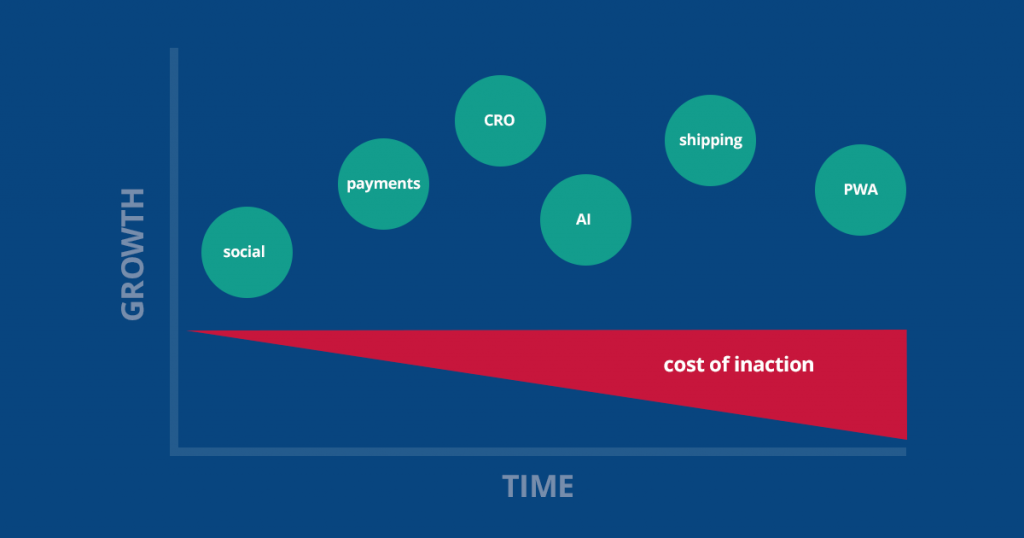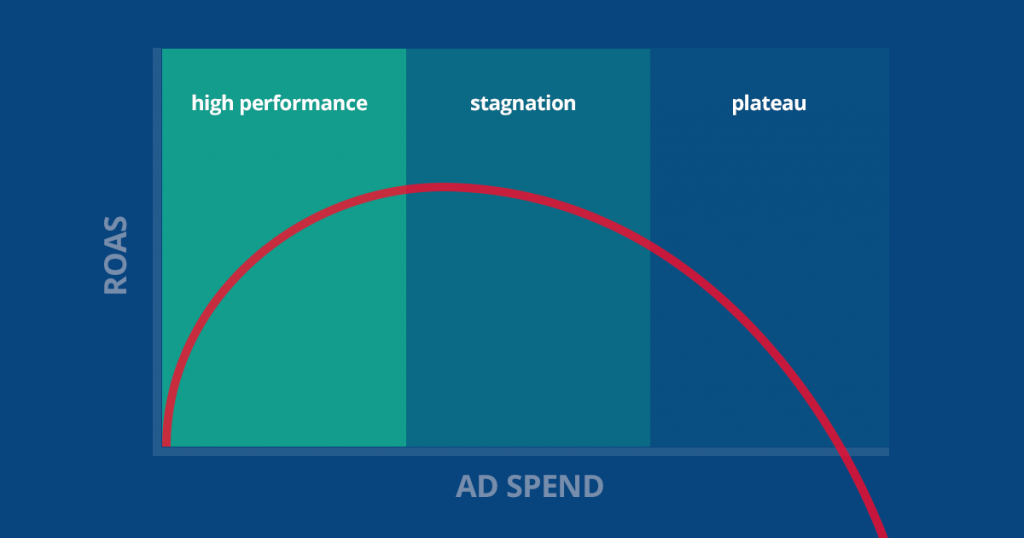Top Cart Abandonment Myths Debunked

Cart abandonment is a big deal in eCommerce. Some merchants invest considerable resources into reducing cart abandonment, while others simply accept it as a part of the game.
Let’s take a look at some top cart abandonment myths and separate fact from fiction. But first, what exactly is cart abandonment? Here’s the definition, according to Optimizely:
Cart Abandonment – When a potential customer starts a check out process for an online order but drops out of the process before completing the purchase.
Merchants have been struggling with this issue since the beginning of online shopping, making it one of the toughest nuts to crack in eCommerce. Cart abandonment is the gatekeeper of your customer experience, standing between you and your store’s revenue potential–it cannot be ignored.
The truth is, cart abandonment affects all merchants–and billions of dollars in revenue are being lost as a result. So, what can we do about it? With so much information available online about best practices in eCommerce, it’s not easy finding solutions for the specific needs of your customer experience.
Let’s dig deeper and see what we uncover.
“You need to implement shopping cart best practices.”
You’ve seen them on blogs, social media, websites, and just about any source that provides informative content–best practices.
But who are they really “best” for? Merchants in a certain industry? Big retailers? Small online stores? All of eCommerce? There are so many variables involved that it’s quite difficult to say something like “Cart abandonment emails only work if you offer a discount” and expect it to apply to everybody.
Here are some cart abandonment myths we’ve encountered while working with merchants and exploring Google–any of these look familiar to you? We’d love to hear your input and experiences.
- Customers abandon their carts because they forgot about them
- Email is the only method for recovering abandoned carts
- Abandoned cart communication is spam
- Cart recovery is difficult and complicated
- Carts are abandoned because shoppers find a better deal elsewhere
- If a buyer makes it far enough to enter their email, they won’t abandon their cart
A better strategy is to determine the best practices for your experience by building intelligence around the customer journey, understanding their preferences, and knowing exactly where to focus.
“eCommerce optimization isn’t worth it.”
Static shopping experiences are one of the most important challenges facing eCommerce going into the new decade. With 86% of mobile shoppers abandoning their carts during the checkout phase, merchants can’t ignore the massive revenue opportunity any longer–experience optimization will be the key to sustainable eCommerce in the 2020s.
If you’re conducting AB or even multivariate tests on your site, you’re already way ahead of the pack–but don’t stop there. Research has shown that eCommerce is ever-changing, meaning the insights you gained last month, or even last week, may no longer be ideal. The next step to growth is continuous optimization, because understanding the customer takes much more than one-off testing–it’s a never-ending learning process that involves the entire merchant community.
In other words, eCommerce optimization isn’t just worth it–it’s an absolute necessity.
“Cart abandonment is just a part of eCommerce.”
Cart abandonment has been around as long as the shopping experience itself, online or in-store, which makes it easy to overlook as an underlying issue. But as eCommerce continues to evolve, merchants must reevaluate and analyze every aspect of the customer experience (some of which you may never have considered before)–or else risk diminishing returns:
 From site design, to payment types, to thousands of other elements that make up your store’s UX, everything has its role in affecting the entire sites performance. Neglect one aspect like cart abandonment, and its effects can be felt throughout.
From site design, to payment types, to thousands of other elements that make up your store’s UX, everything has its role in affecting the entire sites performance. Neglect one aspect like cart abandonment, and its effects can be felt throughout.
“The built-in solution my shopping cart platform offers will suffice.”
With millions of combinations possible for payment styles alone, it’s difficult to believe that a single UX can be optimal for all buying experiences. That’s why it’s important for merchants to prioritize customer preferences on their own stores rather than looking to the rest of the eCommerce world for guidance.
Basically, you have 3 choices:
- Ignore the problem
- Follow what everyone else does
- Quantify the problem for yourself
Obviously, the first option will probably not help you maximize your store revenue–even worse, not paying attention to your customer’s friction points will only snowball over time and seriously hurt your checkout success rates.
The second option has been the norm for years, and while it’s helped merchants make improvements, it’s a bit like putting a band aid on a gaping wound. No two online stores are created equal, so applying the same optimization strategy won’t always yield the same results.
Instead, it’s time to quantify the problem for yourself–what if you knew you were leaving 10% of your potential revenue on the table? For a $10 million a year merchant, that would be an extra million per year. Obviously, a 0% cart abandonment rate isn’t the most realistic goal, but the process of striving for perfection would lead to surprising gains.
“We just need more visitors to our site to drive down our cart abandonment rates.”
More traffic does not equal lower cart abandonment rates, at least not for long. Spending more and more on marketing and advertising always eventually hits a plateau, and shortly afterwards, the returns begin to diminish greatly:
Instead of investing money to bring in more visitors, what about using it to better understand existing customers and what drives them to continue or exit the buyer journey? Boosting traffic certainly has its benefits, but without knowledge of visitor behaviors, it can quickly run down your bottom line. You can’t buy your way into sustainable growth–the name of the game is intelligent, adaptive improvement.
 Here’s a closing statement from our CEO, Zee Aganovic, on the role of continuous optimization as a key component in the next era of eCommerce:
Here’s a closing statement from our CEO, Zee Aganovic, on the role of continuous optimization as a key component in the next era of eCommerce:
“Continuous optimization produces long-term growth. Online consumer behavior, preferences and expectations are constantly changing. That’s why it’s critical that merchants continuously look at ways to improve the user experience in order to see continued revenue growth and be relevant in the highly competitive online retail space.”
Zee Aganovic, CEO, HiConversion
This is obviously not a definitive list of cart abandonment myths, there are so many (see below for more I found online) – my goal was to help you see things a little differently and be OK with questioning the advice that is out there. When it comes to YOUR online store, only YOU can truly know what works and what doesn’t. And if you need some guidance on where to look and get started, let’s talk.
More Cart Abandonment Myths
- A discount is the only way to incentivize shoppers to purchase
- Cart abandonment emails will annoy your shoppers
- Cart abandonment emails are the only way to win back customers
- Personalization isn’t worth the effort
- Emailing cart abandoners doesn’t work
- Even if those emails work, isn’t GDPR a problem?
- It doesn’t work (we tried)
- Cart abandonment messages don’t work without discounts
- We don’t need a specialized cart abandonment solution
- We can develop a cart recovery solution in-house
- Email remarketing only recovers abandoned checkouts, not abandoned carts
- Remarketing emails will upset my customers and keep them from purchasing
- Shoppers are only abandoning their carts because they aren’t ready to buy
- I’m worried about the legality of abandoned cart email marketing
- Having more apps will open many avenues for selling
- More features lead to more purchases
- Use a multi-level billing platform for more security
- Feedback forms and reviews may lead to bad mouthing
- Customers use tactics to get more discounts and coupons
- You don’t have an abandoned cart problem
- Customers are gone forever



